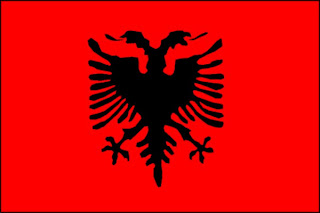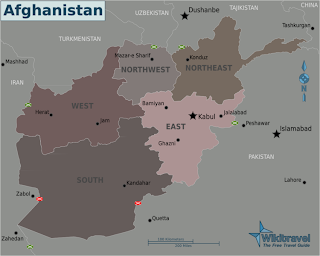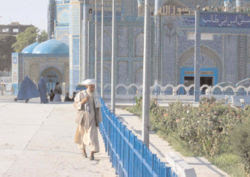Albanian Cuisine
Reading about Albanian cuisine made me hungry! I guess we really are drawn to the familiar. I have a German heritage and I have found that my Grandmother and Great Grandmother's cooking was probably VERY influenced by Albanian, Hungarian, Romanian and old Yugoslavian cuisine. As I was cooking this meal, the smells from my kitchen made me miss my family.
But we'll talk about the meal I made shortly!
In Albania, the main meal of the day is lunch. It usually consists of gjellë, a main dish of slowly cooked meat, and a salad made from fresh tomatoes, cucumbers, olives and green peppers topped with olive oil, vinegar and salt. Sounds delicious to me!
As I was researching this country's cuisine, I saw the same ingredients coming up over and over. A few of those foods were lamb, yogurt, garlic, cabbage, beans, veal, leeks, peppers, various cheeses, oregano, olives and grapes. Their meals are extremely influenced by Greece. But then again...what isn't!
photo courtesy of www.albca.com
Alcohol is vastly consumed. The most common alcoholic drinks include cognac, beer, red and white wines and raki. Mineral water is one of the most commonly consumed non-alcoholic drinks, along with carbonated beverages.
I had to choose a recipe that included lamb. It seemed wrong not to, with as much as it came up in my research.
Albanian Lamb Stew with Okra
Ingredients:
12 Ounce(s) Okra, fresh or frozen
2 medium Green peppers, diced
2 Cup(s) Celery, diced
4 Ounce(s) Onion, diced
4 Cloves garlic, pressed
1/2 Cup(s) Water
1 Pound(s) Roasted lamb
1/4 Teaspoon(s) Thyme
Directions:
Cook okra until liquid evaporated in skillet or Microwave dish, stirring
occasionally for 5 minutes. Add green pepper, celery, onion, garlic, salt
and pepper to taste. Cook for 10 minutes. Stir to prevent vegetables from
sticking. Add water, lamb and thyme and simmer, covered, over Low heat for 20 minutes until heated through.
Sprinkle with paprika and garnish with
lemon rind.
As I said earlier, this dish reminded me of some of the old Hungarian goulashes that my grandmother used to make. And her mother before her. I'd smell it before we even walked through the front door of their home in Chicago. They were amazing and brought a warm comfort over me that I can't really explain. I look forward to cooking some more European recipes in the future!
BUT...next stop... Algeria!
p.s. The husband loved this one :)
Information for this blog was obtained from the following sites:
www.wikipedia.com
http://recipes.wikia.com/wiki/Albanian_Cuisine










